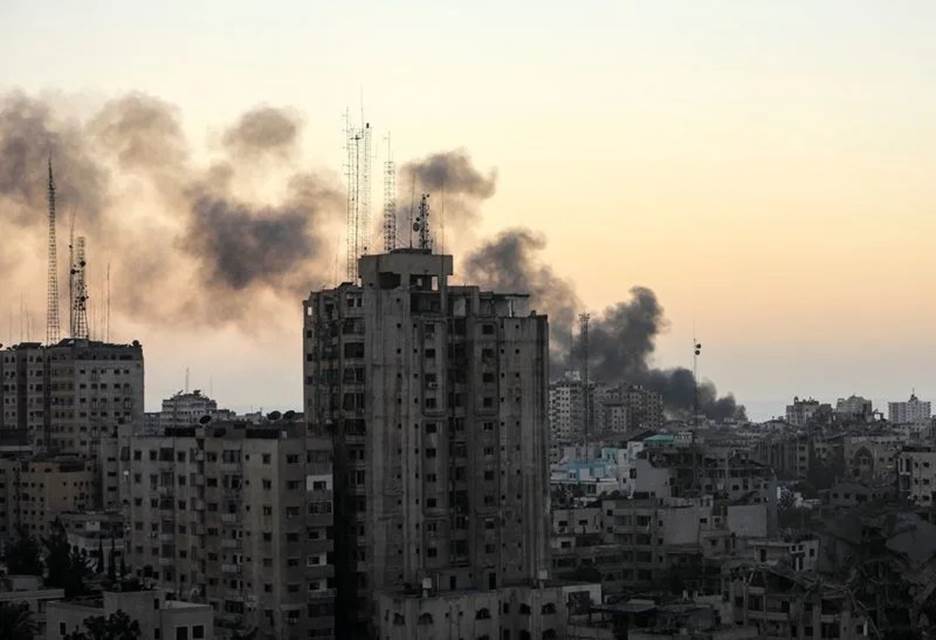
It’s All About the Settlements
By Nayyer Ali MD

Israel’s military continues to slowly push into Gaza, and has already split it into two sections. The Palestinian civilian death toll is over 5,000, and perhaps closer to 10,000, and sure to go higher. While there have been some calls for a “pause” or a “ceasefire”, it is hard to conceive how Israel could abide any outcome that leaves Hamas in control of Gaza. Any “ceasefire” would only last as long as Hamas wanted, and they would gather themselves for another strike against Israel in a few months or years.
But what happens after Israel destroys Hamas? Who will run Gaza? The Israelis certainly don’t want to do that, it would result in an ongoing guerrilla war similar to when Israel was occupying southern Lebanon for years until Hezbollah forced them to leave. One notion is that one or more Arab states provide the force needed to hold Gaza together. Perhaps Egypt or Saudi Arabia or perhaps even Turkey. But this could not possibly be a permanent solution and the quid pro quo for such an arrangement is that Israel begin serious peace talks with the Palestinian Authority and move swiftly toward a real two-state solution that ends the conflict.
Israelis for decades have insisted that the only impediment to peace is the refusal of the Palestinians to accept reasonable peace terms on offer from Israel. But the truth is the exact opposite. Since Israel occupied the West Bank and Gaza in the Six Day War in 1967, it has only offered peace to the Palestinians twice. Once by Ehud Barak at Camp David in 2000 and in the months after, and a second time under Ehud Olmert at the Annapolis negotiations in 2008. The Camp David offer was ridiculous, Barak wanted to carve up the West Bank into little pieces while holding almost all the Israeli settlements and running strings of Israeli territory to them. But after those negotiations failed a second set of negotiations was held at Taba in January 2001. At those talks the two sides came rather close but the deal fell apart when Clinton had to leave office and Barak lost an election to the right-wing Ariel Sharon who opposed a two-state solution and ended the negotiations.
In 2008, the two sides tried again. The maps proposed by both sides are publicly available and show that the Palestinians were not the obstacle to peace. In fact, they gave up the right of return for the refugees, and merely demanded that Israel remove the vast majority of its settlers on the West Bank, particularly the two largest settlements of Ariel and Maale Adumim. The Israeli map showed Israel holding on to both of those settlement blocs by running strings of territory deep into the West Bank and separating Ramallah from East Jerusalem. If Israel had been willing to give up its settlements, this conflict would have been ended 15 years ago, and the terrorist attacks of October 7 would not have happened.
The settlements are illegal housing built for Israeli Jews only (Israelis who are not Jewish cannot live in those settlements) in territory occupied during the Six Day War. The settlements have always been a project of the hard right Zionist movement that sees it as a religious duty for Jews to live all throughout Palestine. They refer to the West Bank by its biblical names of Judea and Samaria. The purpose of putting as many Jews as possible in these settlements is precisely to make a peace deal impossible that involves creating a real Palestinian state.
The first settlers arrived shortly after the 1967 war, but the settlement movement really took off in the 1980’s and accelerated whenever the right wing has been in government. But even when more moderate factions have been in power, the settlements kept getting expanded. At this point, 700,000 Israeli Jews, about 10% of the total, live in the West Bank settlements. To make peace work, the vast majority of them would have to move back to Israel. This is the main obstacle to peace.
Israelis have often cried that their country is too narrow and that a withdrawal from the West Bank would leave them with vulnerable borders that are not “defensible”. But when they drew maps of a peace deal they would accept, it involved long strings of Israeli territory leading to settlements surrounded by Palestine. These are not “defensible” borders. They are just a land grab.
The terror of Hamas has in some ways perhaps broken the stalemate that had prevailed for Palestine over the last 15 years. The strategy of Netanyahu, to build more settlements while strangling the Palestinians and keeping Hamas in power to divide them and prevent negotiations, has come to an end. What the US needs to do is make clear that it is time to resolve this conflict and not just “manage” it. Destroying Hamas but then leaving everything else the same is not acceptable. Only the US has the power to force the Israelis to realize the hard truth. The settlers have to go.
Contrary to conventional wisdom, Israel has removed settlers in the past. The right-wing Menachem Begin forcibly removed settlers from Sinai when that was the price of peace with Egypt. Ariel Sharon evacuated the settlements in Gaza in 2006 when Israel decided that it no longer wanted to directly rule Gaza. It was that decision to leave Gaza that created the power vacuum into which Hamas was able to thrive.
The Palestinians could even allow the settlers to remain, but they would be part of Palestine. Palestinians could move into those settlements just like Jews. Given how much bad blood there is between the two sides, it is unlikely that Israeli settlers would want to stay in that scenario. On the other hand, if Israel evacuated the settlers, they could turn over the settlements to the two million Palestinians who live in refugee camps and want a right of return. They could receive housing in these settlements as compensation for their loss. Regardless, if the Israelis would just give up their dream of snatching permanently land from the West Bank, a two-state solution could be quickly and easily achieved. The primary barrier is the settlers.

